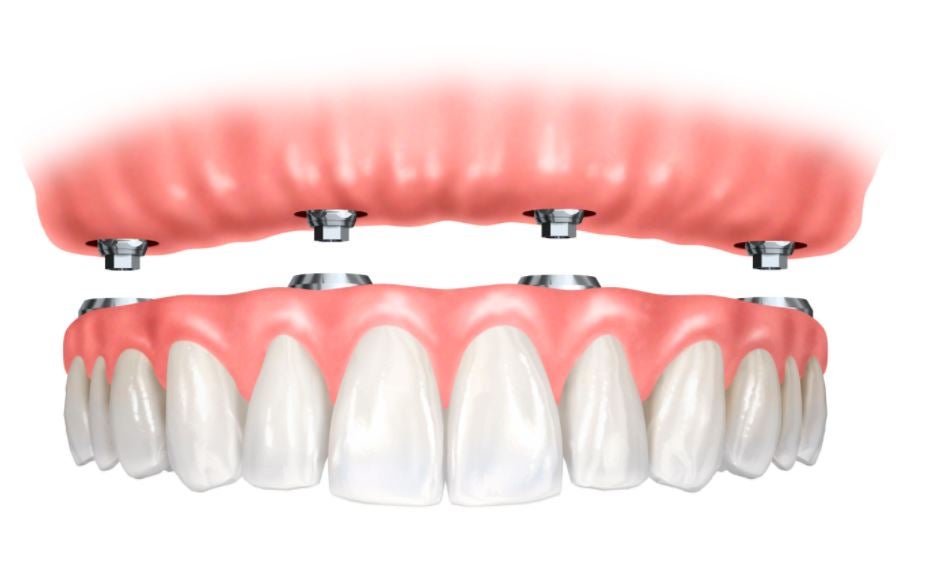All About Dental Sense
All About Dental Sense
Blog Article
Dental Sense Can Be Fun For Anyone
Table of ContentsThe 2-Minute Rule for Dental SenseFascination About Dental SenseThe Best Guide To Dental SenseThe Main Principles Of Dental Sense
are clinical devices surgically dental implanted into the jaw to bring back an individual's ability to eat or their look. They give support for artificial (phony) teeth, such as crowns, bridges, or dentures. When a tooth is lost due to injury or condition, a person can experience issues such as fast bone loss, defective speech, or changes to chewing patterns that result in discomfort.Oral implant systems are composed of an oral implant body and oral implant abutment and might additionally include a joint fixation screw. Professional teeth whitening. The dental implant body is operatively inserted in the jawbone instead of the tooth's origin. The dental implant joint is generally affixed to the dental implant body by the abutment fixation screw and expands through gum tissues into the mouth to sustain the affixed synthetic teeth
(https://dental-sense.webflow.io/)Structure of The Dental Implant System selecting dental implants, speak with your dental copyright concerning the prospective advantages and dangers, and whether you are a prospect for the treatment. Points to consider: Your total health and wellness is an essential aspect in determining whether you are a great prospect for oral implants, how much time it will certainly require to heal, and the length of time the implant might remain in location.
Cigarette smoking may influence the healing process and lower the long-term success of the implant. The recovery procedure for the implant body may take numerous months or longer, throughout which time you normally have a temporary joint in place of the tooth. the dental implant procedure: Thoroughly adhere to the dental hygiene instructions provided to you by your oral copyright.
Getting My Dental Sense To Work
Implant failure can lead to the demand for another operation to take care of or change the dental implant system. Recovers the capacity to chew Recovers aesthetic look Aids maintain the jawbone from shrinking as a result of bone loss Preserves the health and wellness of the bordering bone and gums Aids maintain adjacent (neighboring) teeth steady Boosts high quality of life Damage to surrounding natural teeth throughout dental implant placement Injury to the surrounding tissues during surgical procedure, such as sinus opening Injury during surgery (for instance, fracture of bordering jawbone) Inadequate feature, such as really feeling like the teeth do not attack together typically A feeling that the tooth is loosened or twisting in position resulting from a joint screw loosening up Implant body failing (looseness of the implant body) because of systemic infection, which might be most likely in clients with unchecked diabetes mellitus as a result of neighborhood infection in bone and gum tissues sustaining the implant body because of delayed recovery, which might be more probable in people who smoke Trouble cleansing the periodontals around the dental implant, leading to bad dental health Without treatment periodontal illness Post-surgical tingling as a result of nerve impingement or damages Always notify healthcare carriers and imaging service technicians that you have dental implants before any magnetic resonance imaging (MRI) or x-ray procedures.
FDA is not knowledgeable about any kind of negative events reported for MRI or x-ray procedures with dental implants. Oral implants systems are generally made from products that adhere to worldwide agreement criteria of the International Company for Standardization (ISO) or ASTM International. These criteria have details of what makes a secure material.

A dental implant is a structure that changes a missing out on tooth. With screw-like devices, the surgeon inserts a dental implant into the jawbone, and it serves as an anchor for a fabricated tooth, called a crown. A device called a joint attaches the fabricated tooth to the dental implant. The crown is custom-made to fit the individual's mouth and match the shade of their teeth.
An Unbiased View of Dental Sense
Some people are not eligible for dental implant surgical procedure. It is for oral cosmetic surgeons to operate people with: severe illnessuncontrollable metabolic diseasebone or soft tissue disease or infectionIf these issues are solved, an individual can have the surgical procedure. In, dental surgeons avoid from running on individuals with: If individuals with any one of the above go through oral implant surgical procedure, there is a greater threat of the implant stopping working.

Dental dental implant surgical treatment is a personalized process. It's not the very same for everyone. The following provides a general summary of what you can expect your dental professional, dental specialist, periodontist or prosthodontist to do: Place the implant surgically. Provide you time to recover. Connect the article and last crown, bridge or denture.
Next, your cosmetic surgeon will meticulously position the oral implant into your jaw. Finally, your specialist will certainly rearrange your Professional teeth whitening gums and shut the laceration with stitches. If your dental implant is near the front of your mouth, your dental expert will make a temporary tooth for you to use up until you heal. In this way, you will not have a gap in your smile while you recover.
Getting The Dental Sense To Work
Your supplier can tell you what to expect in your situation. Throughout the recovery stage, your jawbone must fuse to the dental implant. This procedure, called osseointegration, is crucial for security and long-lasting success. This procedure can take anywhere from three to nine months. Sometimes, it may take much longer.
Once your dental implant heals, your dental practitioner can connect the abutment (little connector message) and your last repair (crown, bridge or denture). This usually takes regarding one hour to complete and may call for a second minor surgical procedure. You shouldn't really feel any pain throughout your oral implant treatment because your service provider will certainly use medication to numb your periodontals.
Report this page